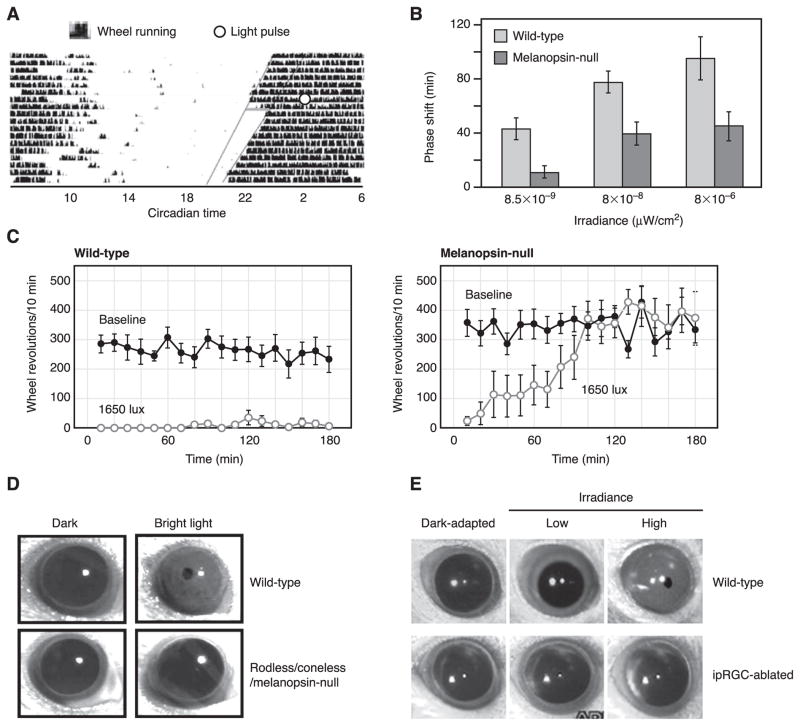FIG. 6.
Whole-animal photic functions involving ipRGCs. A: actogram showing circadian-phase shifting of a wild-type mouse in complete darkness. Dark vertical blips represent wheel-running activity, plotted on a double 24-h time cycle. The endogenous circadian period of this mouse is slightly under 24 h, producing an earlier initiation of activity on each successive day. A 15-min pulse of light given soon after the initiation of activity (open circle) results in a phase shift, with activity beginning with a delay on the next day. B: the extent of phase-shifting for wild-type and melanopsin-null (opn4−/−) mice, with light of different intensities. [A and B modified from Panda et al. (145).] C: negative masking (arrest of locomotor activity) for wild-type (left) and melanopsin-null (right) mice. Melanopsin-null mice can initiate, but not sustain, negative masking by light. Solid circles represent wheel-running activity in darkness. Open circles represent wheel-running activity in light, switched on at time 0. [Modified from Mrosovsky and Hattar (133).] D: pupillary light reflex (PLR) of wild-type mouse and mouse lacking rods/cones and melanopsin (“triple-null” mouse). Triple-null mouse shows virtually no PLR to a light that drives a maximum pupil constriction in the wild-type mouse (top). [Modified from Hattar et al. (89).] E: PLR of wild-type mouse and mouse with ipRGCs largely genetically ablated by targeted, conditional expression of diphtheria-toxin receptor followed by administration of diphtheria toxin. In mice with intact, functioning rods and cones, conditional ablation of ipRGCs eliminated the PLR. [Modified from Hatori et al. (85).].

